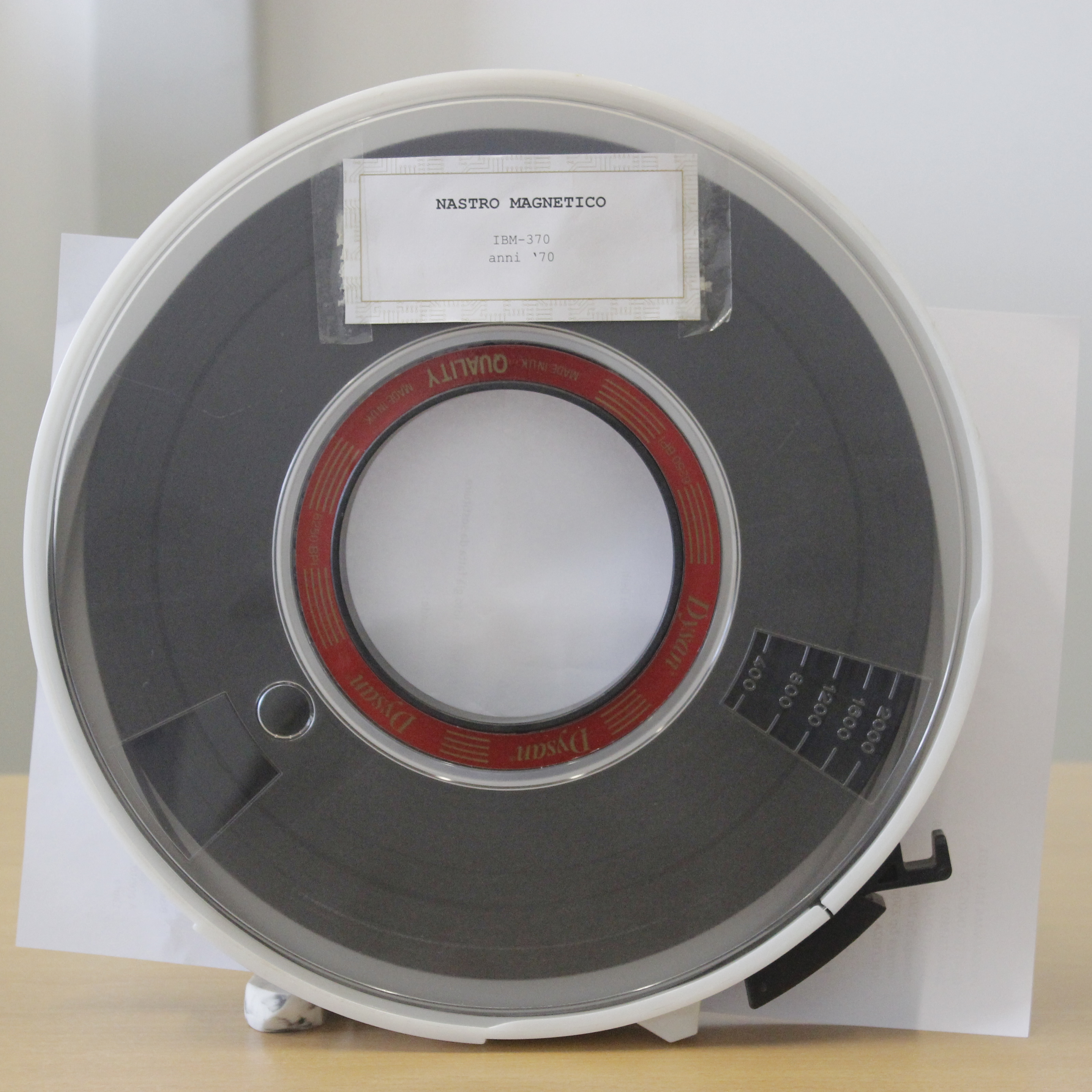
The magnetic tape is a sequential access storage medium (to access a data you need to scroll the tape until you reach the position where the data is located). Initially used as a storage medium for information processing, due to the slowness in accessing non-sequential information, it was subsequently used for offline and long-term archiving of information, where it is still used today.
Insights
Tape archiving is the oldest storage technology still in use in the IT field. IBM computers in the late 1950s used tapes similar to those used in audio recording technology, covered with a layer of metal oxide. The magnetic tape was wound on 10.5-inch wide reels and they were available in different lengths, the two most common being the 2,400 and 4,800 foot ones.
The first IBM tape drives were quite complex, using the vacuum in the columns intended to collect the amount of tape that were to serve as buffers. This was to avoid tearing the reels and to ensure fluidity and continuity even in the starts and stops of the tape itself.
The changes on the reel tape technology were not long in coming with the LINCtape and its derivative, DECtape, from DEC. The LINCtape had a fixed track formatting system, which allowed to read and rewrite predefined blocks of data in the same place. The transfer capacity and speed were similar to those of the floppy disks, but the access time ranged from 30 to 60 seconds.
The spools were placed inside a cartridge to protect the tape and facilitate handling.
The drive, transport or deck tape units used stepper motors to wind the tape into the reel, while this was kept in contact with the read / write head by means of the capstan, a rotating spindle used to move the recording tape through the mechanism of a tape recorder.
The data was recorded in seven parallel tracks along the entire length of the tape; this allowed to store or read six bits simultaneously, plus the parity bit. The most used recording density was 556 characters per inch.
Il nastro era dotato d’indicatori riflettenti in corrispondenza delle due estremità; entrambe segnalavano rispettivamente l’inizio “ beginning of tape” (BOT) e la fine “end of tape” (EOT) all’unità nastro.






